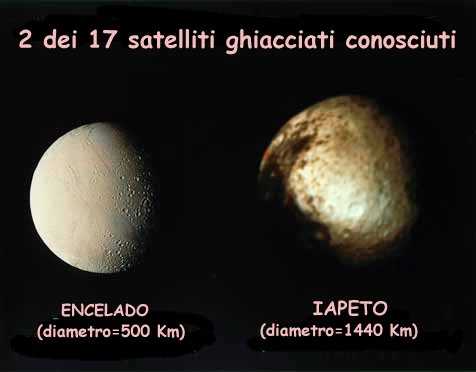

Some of the interesting variety among Saturn's
many known icy satellites is revealed in these Voyager-2 images.
Enceladus' bright, relatively uncratered terrain is coated with
water ice. The smooth areas suggest that internal heating has
melted portions of the surface, possibly even leading to "eruptions"
that feed Saturn's tenuous E ring. Iapetus, on the other hand,
has a leading face as dark as asphalt, while its trailing face
is six times brighter. The dark side is presumably some type of
carbon-based material, but was it swept up as the moon orbited
Saturn, or did it rise up from the moon's interior? Each of these
theories has its scientific proponents. Resolution of this and
many other scientific questions will likely require careful analysis
of data to be provided by the international Cassini/Huygens mission
to the Saturn system. (P-46656)